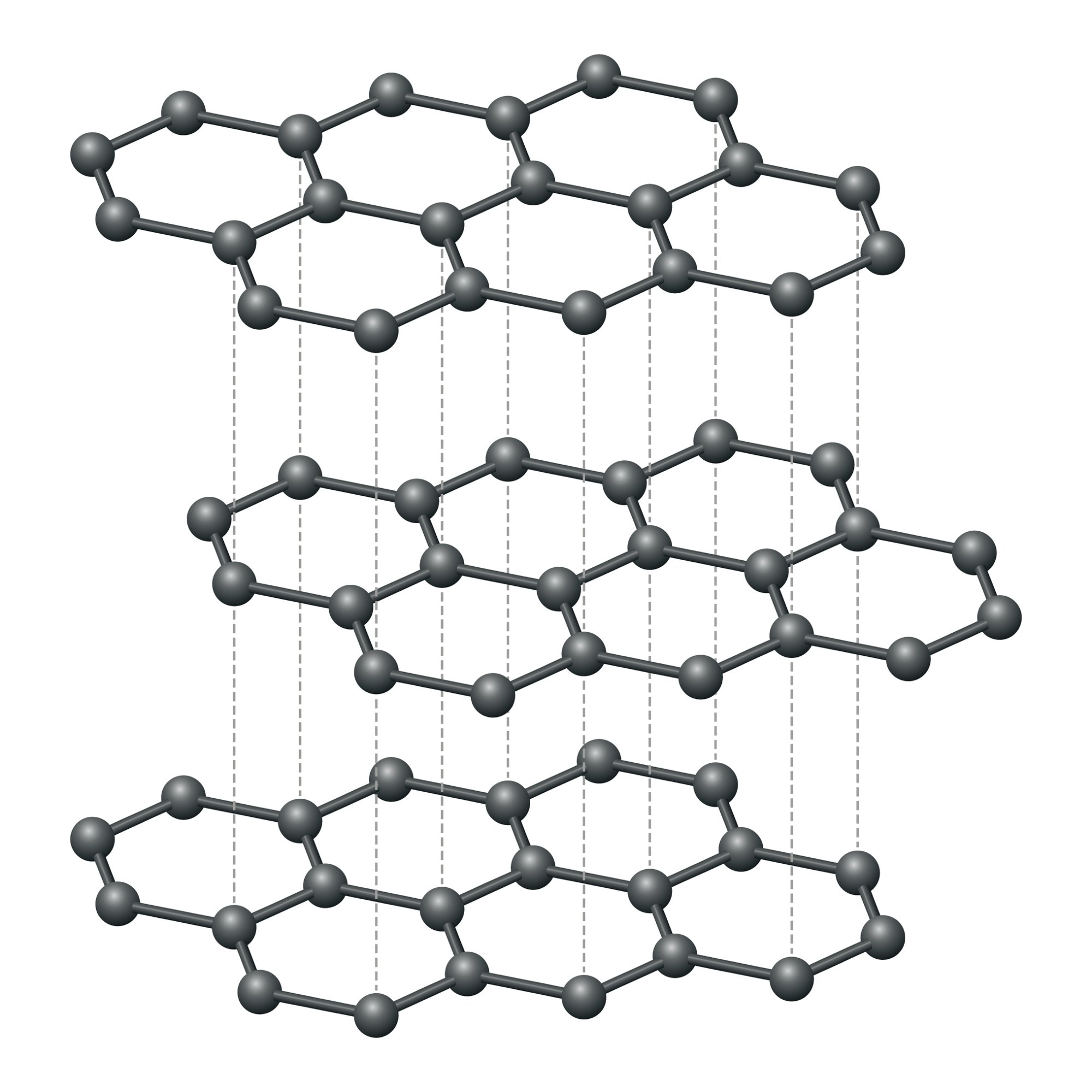Electronic behavior is a highly engaging domain for physicists exploring the properties of graphene. In this article, we discuss the relationship between stacked graphene and its electronic behavior.

Image Credit: Yurchanka Siarhei/Shutterstock.com
Usually, in most semiconducting materials, massive charge carriers are responsible for the conduction.
However, in graphene, the electrons and holes responsible for the charge transport in a single layer of graphene follow a linear energy dispersion touching each other at Fermi energy (EF), behaving as relativistic chiral massless particles known as Dirac fermions. In simple terms, a single layer of graphene has a band gap of zero, with no density of states at EF.
What is Beyond the Single Layer Graphene?
The electronic properties of single-layer graphene are already exciting, but things get even more intriguing when we look at stacked graphene. The arrangement of hexagonal C sheets in AB or ABC sequence, which are held by van der Wall forces in the z direction, forms stacked graphene.
All the configurations of stacked graphene show some unique electronic behavior that can be significant for both study and industrial applications.
What is interesting about stacked graphene is that it has a tunable or adjustable band gap, which overcomes the key limitation of monolayer graphene while retaining all other useful properties.
The commonly known integer quantum hall effect in bilayer stacked graphene is very unusual due to massive chiral quasiparticles with a parabolic dispersion at low energies.
It has been demonstrated by various optical and electrical transport measurements that the underlying physics is responsible for the potential electronic applications due to the control over the charge carrier density and energy band gap through external gate voltage or doping.
The Diverse Electronic Properties in Stacked Graphene and Beyond
Back in the early stages of stacked graphene research, Prof Mina Yoon and the team from Oak Ridge University used density functional theory and perturbation analysis to dig into the electronic behavior of stacked bilayer graphene in the presence of an external electric field. They also established the first phase diagram relating the stacking with the gap opening on applying a particularly strong field.
The rhombohedral stacked trilayer graphene can be regarded as the semimetal that exhibits an overlapping conduction and valence band tunable by a gate voltage. Recently, in 2021, a team led by Andrea F. Young from the University of California came up with an interesting prediction.
Usually, all the stacked graphene structures show van Hove singularities near the band edges in which the density of state diverges and can be enhanced by an external electric field. The gate-tuned von Hove singularities lead to spontaneous ferromagnetic polarization into spin and valley flavors of rhombohedrally stacked trilayer graphene.
Furthermore, other than ferromagnetism in rhombohedral trilayer graphene, superconductivity was discovered on the cusp of an isospin-symmetry-breaking transition. The fermi surfaces are localized to the two inequivalent valleys at the end of Brillouin zone of the hexagonal carbon arrangements.
In the absence of an external field, the noninteracting electronic configuration of rhombohedral twisted graphene is characterized by the presence of three Dirac crossings within each valley.
Edward McCann and his team from the University of Manchester theoretically found that rhombohedral stacked graphene retained 2D nature up to ten layers of thickness. Their findings suggest that the two-dimensional nature is retained even when it consists of tens of layers. The electronic states at low energies result in a semimetallic band structure featuring two nearly degenerate bands around the valley center as the energy approaches a critical value denoted as the band dispersion becomes highly anisotropic.

Image Credit: Peter Hermes Furian/Shutterstock.com
The introduction of spatial asymmetry between the surface layers, which can be achieved by applying an electric field perpendicular to the film or may arise due to interaction-induced spontaneous symmetry breaking, can transform the material into an insulator with an energy band gap. Additionally, this transformation gives rise to topologically non-trivial states characterized by a substantial Berry curvature and intrinsic magnetic moments of electrons.
The latest research by Long Ju and his group from Massachusetts Institute of Technology, Cambridge, investigated the orbital multiferroicity in pentalayer graphene with rhombohedral stacking.
To deliberately avoid moiré effects, they introduced a non-zero twist angle between the layers of graphene and hexagonal boron nitride (hBN). They focused on the orbitals located at two specific sublattices that dominate the electronic states near zero energy.
In the absence of an external electric field in the pentalayer rhombohedral graphene, the two bands exhibit significant flatness and a notably higher density of states compared to thinner graphene layers. Importantly, the system's inversion symmetry ensures a zero Berry curvature in this state. When an electric field is applied to open a bandgap, states near the band edges acquire a non-zero Berry curvature. These results demonstrate that valley and orbital magnetism are distinct order parameters in rhombohedral graphene.
Conclusion
Collectively, these studies illuminate the distinctive characteristics of stacked graphene layers and their potential for exploring surprising electronic phenomena. While single-layer graphene is known for its unique electronic properties, stacked graphene goes beyond its tunable band gap, unusual quantum hall effect, superconductivity, emerging ferromagnetism and many other fascinating phenomena. The adventure isn't over yet – there are still plenty of thrilling discoveries to be made in this fantastic realm of research.
References and Further Reading
Park, C., et al. (2015). Electronic properties of bilayer graphene strongly coupled to interlayer stacking and an external electric field. Physical review letters, 115(1). doi.org/10.1103/PhysRevLett.115.015502
Zhou, H., et al. (2021). Half-and quarter-metals in rhombohedral trilayer graphene. Nature, 598(7881), pp.429-433. doi.org/10.1038/s41586-021-03938-w
Zhou, H., et al. (2021). Superconductivity in rhombohedral trilayer graphene. Nature, 598(7881), pp.434-438. doi.org/10.1038/s41586-021-03926-0
Slizovskiy, S., et al. (2019). Films of rhombohedral graphite as two-dimensional topological semimetals. Communications physics, 2(1), p.164. doi.org/10.1038/s42005-019-0268-8
Han, T., et al. (2023). Orbital multiferroicity in pentalayer rhombohedral graphene. Nature, pp.1-7. doi.org/10.1038/s41586-023-06572-w
Disclaimer: The views expressed here are those of the author expressed in their private capacity and do not necessarily represent the views of AZoM.com Limited T/A AZoNetwork the owner and operator of this website. This disclaimer forms part of the Terms and conditions of use of this website.